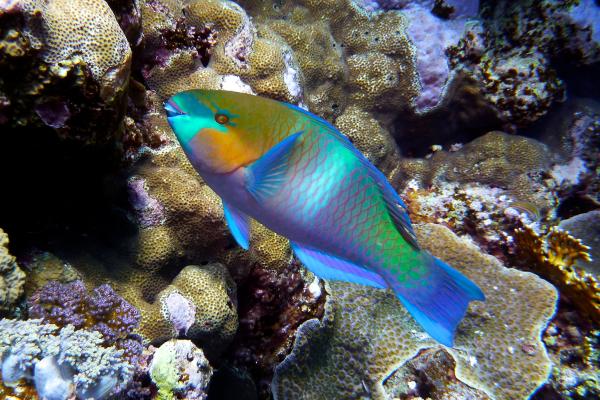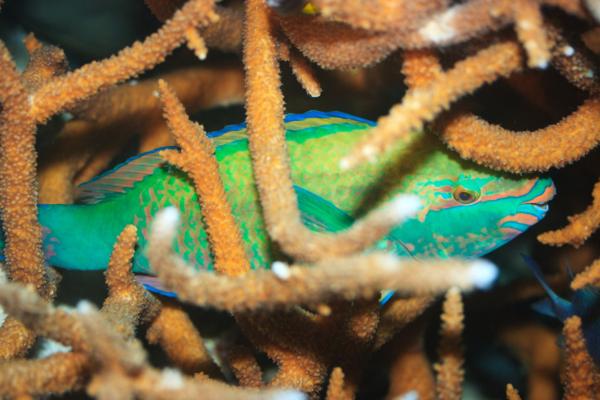Parrotfish (family Scaridae) are among the most vibrant and ecologically important reef fish in tropical oceans. Known for their dazzling colors and distinctive beak-like mouths, parrotfish play a crucial role in maintaining coral reef health and even in the formation of the white sands found on tropical beaches. If you want to learn how parrotfish contribute to sand production and why their protection matters, read on for a comprehensive overview of their characteristics, habitat, feeding habits, reproduction, and ecological value.

Size & Lifespan: Most parrotfish measure between 20 and 50 centimeters in length, though some species can reach up to 1.5 meters, while the smallest are only about 10 centimeters. They typically live around 7 years.
Brilliant Colors: Parrotfish are famous for their vibrant hues—shades of blue, green, yellow, and red. Their coloration often changes with age and sex.
Unique Anatomy: The "parrot" name comes from their fused teeth, forming a strong, beak-like structure ideal for scraping algae from hard surfaces.
Nighttime Protection: At night, parrotfish secrete a mucus cocoon to cover their bodies, hiding their scent from nocturnal predators and providing protection as they sleep in shallow reef areas.
Parrotfish have been eaten in some regions for centuries and are rich in Omega-3 fatty acids. In Polynesia, they were historically a delicacy for royalty, and today they are still considered gourmet seafood in places like Egypt and Australia.
However, caution is needed: parrotfish may accumulate a toxin called ciguatoxin, which can cause food poisoning (ciguatera), leading to muscle pain or even paralysis.
More importantly, parrotfish are vital to coral reef health and sand production, so most conservationists strongly advise against eating them.
Parrotfish are widely distributed across the world's tropical coral reefs, including the Caribbean, Indian Ocean, and Pacific.
Coral Reef Specialists: They are found mostly in shallow reef areas, rocky substrates, and seagrass beds, where their feeding and sheltering activities are critical to ecosystem balance.
Day and Night Patterns: Parrotfish are most active by day, foraging and cleaning reefs, and seek safe crevices to rest at night.

Primary Diet: Parrotfish feed primarily on algae that grow on corals and rocks. They use their beak-like teeth to scrape off algae, often ingesting pieces of coral in the process.
How They Make Sand: As they grind up coral fragments to extract algae, parrotfish are unable to digest the hard calcium carbonate, so they excrete it as fine sand.
Environmental Impact: A single adult parrotfish can produce up to 900 kg (nearly 2,000 lbs) of new sand each year. In the Maldives, for example, parrotfish are responsible for about 85% of all new sand production.
Sequential Hermaphroditism: Many parrotfish species are sequential hermaphrodites, meaning they can change sex during their life cycle, typically from female to male. This transition is often accompanied by changes in color and size.
Social Structure: Parrotfish usually live in harems, with one dominant male and several females. Their eggs are pelagic (floating) and become part of the plankton until the larvae settle and grow.
Group Living: Juveniles and adults often form schools, which helps reduce predation.
Coral Health Guardians: By grazing on algae, parrotfish prevent algae from smothering corals, ensuring space for new coral polyps to settle and grow.
Sand Producers: Parrotfish are essential for the formation and renewal of tropical beaches, making them critical “sand engineers” for island and reef environments.
Conservation Status: While parrotfish are generally listed as “Least Concern,” overfishing has reduced populations in some areas, prompting regulatory bans. Belize, for example, has enacted laws to protect parrotfish and their role in reef ecosystems.
Conservationists recommend:
Do not consume or catch parrotfish, and help raise awareness about their importance for healthy reefs and beaches.

Parrotfish are not only among the most beautiful reef fish but also crucial guardians of the world’s coral reefs and tropical beaches. By understanding and protecting parrotfish, we contribute to the preservation of vibrant marine ecosystems and the sandy shores we love. For more information on coral reefs, tropical fish, and ocean ecology, explore other articles on our website!
Bibliography
Encyclopaedia Britannica. (2012). Great Atlas of Science: Fishes. Barcelona: Editorial Sol 90.
The Nature Conservancy. (2022). Parrotfish. Available at: https://www.nature.org/en-us/get-involved/how-to-help/animals-we-protect/parrotfish/
animal tags: Parrotfish
We created this article in conjunction with AI technology, then made sure it was fact-checked and edited by a Animals Top editor.